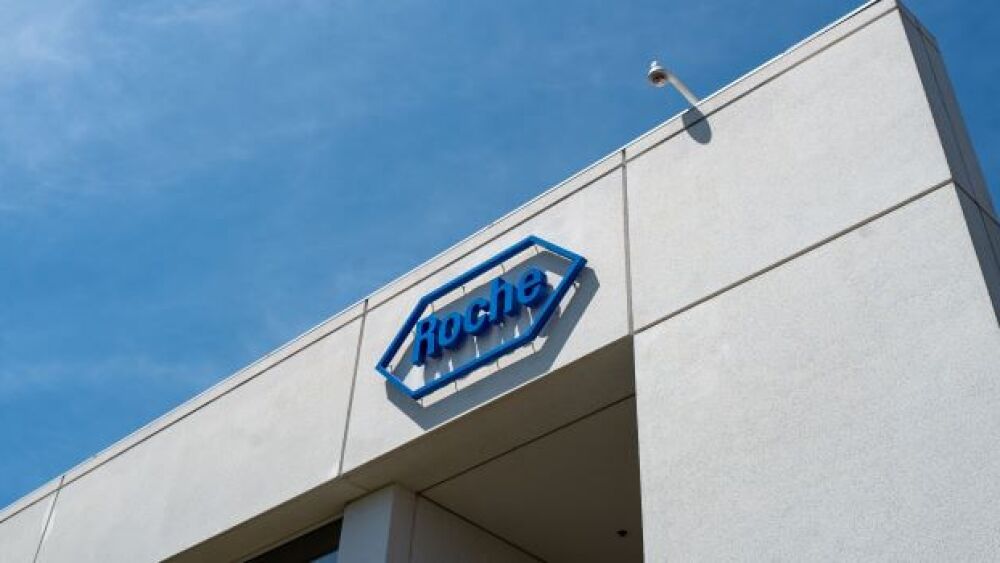Avista Therapeutics inked a partnership deal with Swiss pharma giant Roche to develop AAV gene therapy vectors for eye diseases.
Courtesy of Smith Collection/Gado/Getty Images
Pittsburgh-based Avista Therapeutics has inked a partnership deal with Swiss pharma company Roche to develop AAV gene therapy vectors for eye diseases. The collaboration will use Avista’s single-cell adeno-associated virus (AAV) engineering platform, scAAVengr, to develop intravitreal AAV capsids that match a capsid profile defined by Roche.
Under the terms of the deal, Roche will pay Avista $7.5 million upfront. If the initial partnership is successful, Avista will be eligible for additional payments during the research phase as well as clinical and sales milestones. There will also be royalties for any commercial products that come out of the partnership. In total, the partnership agreement has a potential deal value greater than $1 billion.
Avista’s in vivo scAAVengr platform uses a high-throughput approach with built-in quantitative validation of novel cell-specific AAVs. This allows for fast translation of transformative gene therapies into the clinic for diseases of the eye. Avista plans to develop a proprietary pipeline based on a toolkit of AAV variants that can target gene delivery to individual retinal cell types.
“Traditional therapies for retinal dystrophies address only symptoms and complications, neglecting the underlying biology of the diseases, and while current vector technologies hold promise, they have been greatly limited in their ability to target key cell types across the retina,” Robert Lin, Ph.D., CEO of Avista said. “Avista was founded to solve this problem, and our innovate scAAVengr platform allows us to deliver gene therapy payloads through intravitreal injection to treat a full range of retinal diseases with reduced immunogenicity.”
Avista is a spinout from the University of Pittsburgh Medical Center (UPMC). The company was founded by Leah Byrne, Ph.D., assistant professor of Ophthalmology at U of P School of Medicine. Byrne is an expert in AAV vector generation. Cofounders include Dr. Jose-Alain Sahel, M.D., chair of the Department of Ophthalmology at UPSM, known for expertise in vision restoration techniques and Dr. Paul Sieving, M.D., Ph.D., former director of the National Eye Institute.
The company received $10 million in seed funding as well as foundational support from UPMC Enterprises.
“UPMC is thrilled to support the launch of Avista, a team with unmatched expertise in AAV technology and clinical ophthalmology who are addressing a diverse group of blinding disorders that have a profound impact on patients’ quality of life,” Jeanne Cunicelli, president of UPMC Enterprises stated. “We believe that Avista is uniquely positioned to address the high unmet medical need in inherited retinal diseases.”
Multiple Companies Look to Break Through in Ocular Gene Therapy
Inherited diseases of the eye have been a consistent and early target for gene therapies, partly because the therapies can be introduced directly into the eye instead of systemically where they are processed by the liver. The first gene therapy to be approved in the U.S. was Spark Therapeutics’ Luxturna (voretigene neparvovec) for a rare, genetic type of blindness. It was approved for the treatment of pediatric and adult patients with confirmed biallelic RPE65 mutation-associated retinal dystrophy in December 2017.
Nanoscope Therapeutics announced last week that it would be presenting data on its gene therapy program for degenerative retinal diseases, retinitis pigmentosa and Stargardt disease. It is currently running clinical trials in the U.S. for MCO-010 for retinitis pigmentosa using an intraocular injection to deliver a gene that encodes for the ambient light-sensitive MCO protein into retinal cells. The therapy is also being developed for Stargardt disease and is in a Phase II trial.
For the past few years, numerous companies have been partnering with others that focus on developing vectors for gene and cell therapies or broadening their own manufacturing capabilities in this area.
For example, in July 2021, bluebird bio and National Resilience entered a strategic alliance around cell therapies. Resilience acquired bluebird’s manufacturing facility in Research Triangle Park, where it is continuing to supply gene and cell therapy vectors for bluebird bio and 2seventy bio, bluebird’s oncology cell therapy spinoff.
Other examples include Biogen signing a collaboration deal with Ginkgo Bioworks who together “aim to redefine the industry standard for manufacturing recombinant adeno-associated virus (AAV)-based vectors.” Biogen gained access to Ginkgo’s cell programming platform, which Gingko will use to improve the AAV production titers of Biogen’s gene therapy manufacturing.
Earlier last year, Fujifilm Corporation and the Center for Advanced Biological Innovation and Manufacturing (CABIM) planned to lease a site in Watertown, Massachusetts to advance research into cell and gene therapy, gene editing, immunotherapy and biotechnology. It is the third location for Fujifilm Diosynth’s CDMO viral vector services.
One year earlier, Nationwide Children’s Hospital’s Abigail Wexner Research Institute (AWRI) in Columbus, Ohio, announced plans to build a gene therapy manufacturing plant. A few months before that, Harvard University indicated it would invest $50 million in a not-for-profit manufacturing and training site for cell and viral vectors. In March 2019, Thermo Fisher acquired Brammer Bio, a gene and cell therapy manufacturer, for $1.7 billion in cash. Brammer Bio is a CDMO focused on viral vectors for gene and cell therapies.
And when Moderna inked a manufacturing deal with Swiss-based Lonza in May 2020, the focus was on manufacturing the COVID-19 vaccine, but the contract was a 10-year strategic collaboration that could include manufacturing of other vaccines and gene and cell therapies.
Given the saturation of the space, Avista and Roche have their work cut out for them to prove their gene therapy is as or more effective than the competition.





